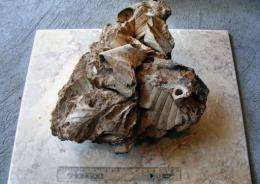Peruvian diggers find 2.5 million-year-old tobacco

Paleontologists in Peru have discovered fossilized tobacco in the northern Amazon that dates back to the Pleistocene Era 2.5 million years ago, the scientists said Friday.
The compact block of tobacco, about 30 square centimeters (4.5 square inches), was found by scientists from the Meyer-Honninger Paleontology Museum earlier this week in the Maranon river basin in northeastern Peru.
"This discovery allows us to establish that the plant dates back to the Pleistocene Era, and confirms that it originated in northern Peru," the museum said in a statement.
Tobacco was smoked and chewed by Native Americans long before the arrival of European explorers in the 15th century, the scientists said.
It was also used for therapeutic purposes -- in everything from eye drops to enemas -- and for rituals, such as blowing smoke into the faces of warriors before battle and on women prior to intercourse, they said.
(c) 2010 AFP

















